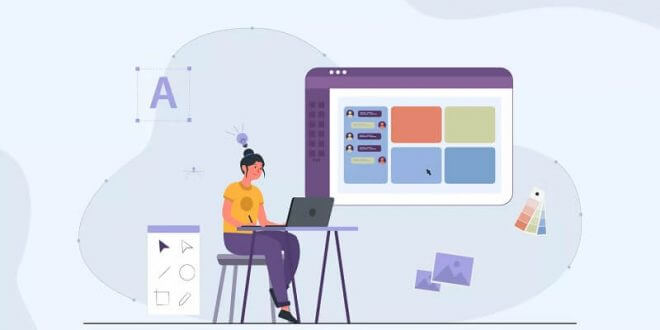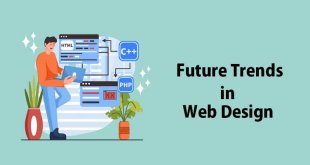Despite significant advancements in recent years, UX design is still a young subject trying to establish its foot in the dynamic digital landscape. There is a lot of room for improvement in understanding the UX design process and how it can be used to better serve the target audience, despite the fact that every new trend in UX design promises to revolutionize our perspective on design experiences.
The first stage in user experience design is to acquire information about the target audience. Providing a pleasant and essential experience for users necessitates a grasp of user psychology and the use of UI UX design services company design best practices.
What is user experience design (UXD), and how can it be used to make a product better for its end users? These questions and more are answered in this article.
Definition of UX Design?
By boosting a product’s usability, accessibility, and enjoyment offered in contact with the product, User Experience Design (UXD or UED) increases user satisfaction with the product.
It is not the job of an individual or a team; rather, it is the goal of the whole business to provide an experience that will satisfy its users.
A well-designed user experience does more than simply showcase and advertise your digital space; it also plays a crucial part in gaining the trust of your target audience. Excellent UX design, relevant content, and the ability to address consumers’ pain points all work together to propel a brand in the direction of its intended audience.
What is the User Experience Design Process?
Most designers make the mistake of immediately trying to solve a client’s issue when they are presented with it. Putting oneself in a customer’s position is the first step toward solving an issue.
The UX method of issue solving looks like this:
Intelligent user experience design begins with issue identification and the management of all potential solutions. Try to answer these questions before diving into the solution.
What Role Does UX Design Play in Software Engineering?
User experience design is essential in the creation of any program, whether it is a website or mobile app. In reality, a product’s reputation with customers will erode if it doesn’t undergo a thorough UX design process to ensure it adequately meets the demands of its target audience.
Users will leave if they no longer feel committed to using your program. And it might mean trouble for your brand and bottom line. The following numbers support our claims:
- Hubspot reports that if a website has bad UX, 88 percent of visitors will leave.
- If a mobile app doesn’t work as expected, 90% of people won’t keep using it.
- A survey conducted by Amazon Web Services found that eCommerce companies lose 35% of revenues because of a negative customer experience.
- Therefore, the design team may more easily create a product that provides a fantastic user experience by following a straightforward and well-defined UX approach.
What Are The 8 Stages of The User Experience Design Process?
The UX design process includes determining the why, what, and how of a product. While the “Why” covers the user’s motivation or reasons for utilizing a product, the “What” addresses the activities consumers may perform with the product (its functionality). And the “How” refers to the construction of the capabilities in a seamless manner.
All successful products, whether they are websites or mobile apps, need a smooth user experience. It is critical to engage a user with a brand since its absence might leave users dissatisfied, resulting in low user retention. A UX design process diagram looks like this:
1. Stakeholder Interviews
Interviewing relevant parties is a crucial part of the user experience design process. Because you’ll be able to describe your business’s aims, vision, values, and the strengths and weaknesses of your product in this phase, it’s the initial step in establishing the design method.
Conversely, stakeholders are those whose input is vital to the success of your project. That’s why conducting interviews with potential users should kick off the UX design process for your app.
Finding out who you want to talk to and why their input is valuable can help guide your stakeholder dialogues in the right direction. The next step is to have all of the conversations recorded and then sent to the UX agency designers for review.
After completing this step, you and your team will have agreed upon product objectives.
2. User Research
User research is a vital part of the user experience design process. Considering the ultimate goal of UX is to provide the best possible service to the end user, this is crucial. The designer at this point is eager to hear feedback from consumers.
User research is conducted so that product designers may empathize with and gain insight into the requirements and challenges faced by the product’s target audience.
Interviews, observations, and surveys will all play a role in this phase of the project, with the survey technique beginning with a study of the issue area, followed by the preparation of interviews with stakeholders and prospective users. Conducting market analysis on similar products is still another necessary step.
3. Developing a Sitemap and Flow Based on User Personas
Personas in design are fictional representations of a target audience made to be used as a guide.
User personas do not, however, communicate the thoughts and views of every conceivable user; they just represent the narrative and flow of a single user. It’s more of a generic account catering to the most frequent of customers or their primary goals. The goal is to identify one of the most distinct and stable target audiences, learn what drives and frustrates them, and tailor solutions accordingly.
4. Formulation of an Informational Structure
The design of the information architecture is a vital part of the User Experience design process. Sitemaps are helpful in displaying the connection and interconnectivity between various pages on a website and are used to illustrate how the navigation should be organized.
5. Wireframes
A wireframe is a graphic representation of the page structure used as a reference throughout the design phase. Wireframes are the foundation of any product, and designers often utilize them as such while creating mockups.
There is a plethora of software out there that may assist in wireframing, including Sketch, Figma, Axure, Adobe XD, Balsamiq, and many more. By using them, you can be certain that your finished wireframes will look great and be well-built.
6. Interactive Prototypes Development
The next step in the process is to create an interactive prototype. The process of designing the UX’s interface takes place in a design program like Sketch, Photoshop, or Illustrator. It’s where user interface UI/UX Design Trends meet user experience design.
7. Prototype Testing
The goal of this stage of the UX design process is to find out whether the proposed solution is effective. It’s also got an eye on assessing the quality of the services your project has offered so far. Paper and digital prototype testing will be available for the UX project.
8. Iteration
In this, the last step of the UX design process; the project design is refined in light of the views of the users and the input solicited and received from other stakeholders. It’s the last round of tweaks before the design is released to the public, and it’s an iterative process.
Conclusion
While providing users with a smooth and satisfying journey, the UI/UX Design Trends process and methodology also give creatives a chance to hone and perfect their work. Recognizing what goes into creating a user interface is the first step in making your product a hit with customers. This blog post provides a high-level overview of the eight stages of UX design in order to shed light on the best method. Follow this checklist as you go through the UX process to create flawless product experiences for your customers.
User experience design begins with a firm grasp of corporate objectives and an appreciation for how best to meet the needs of a defined audience. Achieving this requires an understanding of user psychology and the application of the aforementioned UX design stages to your next project.
 free html design Free html design templates
free html design Free html design templates






